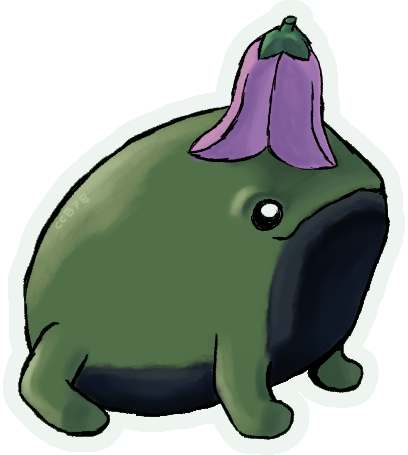HOME | DD
 AlphaX9 — Paleogaps #47- Proboscidean duo
AlphaX9 — Paleogaps #47- Proboscidean duo

#paleontology #speculativeevolution #paleogaps
Published: 2018-12-17 20:23:39 +0000 UTC; Views: 1392; Favourites: 27; Downloads: 1
Redirect to original
Description
Megagnathodon cementariiName meaning: “trowel big jaw tooth”
Height: 8-9 feet
Length: 18 feet
Weight: 4 tons
Habitat: arid shrublands
Region: Namibia
Era: Pliocene (5-2 mya)
Deinotheriidae is a group of Proboscideans that originally evolved during the oligocene epoch. They used to inhabit most of the old world up until the early Pleistocene. They’re not super diverse with only 3 genera known so far. It wasn’t until 2024 when a farmer came across a strange fossil sticking out of a rock face in Namibia. Perplexed by his discovery, the unknown farmer contacted a team of paleontologists from South Africa. The fossils consisted of two tusks and half of the lower jaw from an unknown animal. Based on the teeth, the paleontologists concluded that the teeth belonged to a Deinothere, and with permission from the farmer, the team was allowed to enter the property in order to dig up the rest of the skeleton. Around 50% of the skeleton was discovered and the bones showed evidence that it was partially scavenged. The new Proboscidean was named Megagnathodon.
The biology of this animal is rather bizarre compared to most extinct elephants. For starters, they possessed a pair of tusks on the lower jaw like most deinotheres, however they’re rather long and straight compared to other members of the same group which typically have curved down tusks. Secondly Megagnathodon possessed elongated back vertebrae that’s akin to camels. Paleontologists suggests that this animal lived in an arid habitat and used its fatty hump during the dry season when food is scarce. The function of the tusks was rather difficult to figure out. It was originally thought that the tusks were used to pull down branches. However their teeth are similar to grazing animals and nothing like a typical browser. It’s most likely that Megagnathodon used its tusks to feed on roots and tubers. Besides the original skeleton that was uncovered in 2024, another set of bones were found in the same location. The fossils in question belonged to a juvenile Megagnathodon. Although mostly complete, the skull showed evidence that it was killed by some sort of predator. The puncture marks indicate that a saber toothed cat was responsible.
Megagnathodon shared its habitat with various other animals such as horses, rhinos, various antelope, saber toothed cats, and hyenas just to name a few. The cause of their extinction most likely stems from climate change during the end of the Pliocene. As the earth’s climate gradually cooled down, parts of Africa became more arid and dry. As a result, the plants that Megagnathodon fed on declined and their original habitat gradually became a desert. By 2 million years, this beast went extinct.
Notable fossils
2024: the first skeleton was discovered by a farmer in Namibia and was later excavated by paleontologists from South Africa. The skeleton is 50% complete and is currently in storage.
2026: a skeleton of a juvenile Megagnathodon was uncovered in the same location. This individual was at least a year old when it died and puncture marks on the skull suggests that a saber toothed cat killed it. The remains were almost complete and is shown on display in South Africa.
Austromammut patagonensis
Name meaning: “Southern mastodon of Patagonia”
Height: 7-8 feet
Length: 12-15 feet
Weight: 3-4 tons
Habitat: coastal shrublands
Region: Argentina
Era: Pliocene to Pleistocene (3 million to 250,000 years ago)
A team of paleontologists were excavating fossils in southern Brazil when they came across a pair of tusks that were jutting out from rocks. After removing several large pieces of stone and plastered them, the team brought them back to the museum for prepping. At first the team thought that the tusks belonged to some sort of Gomphothere. However, after examining the skull, teeth, and tusks; it was soon realized that the fossils belonged to a mammutid or mastodont. The new animal was named Austromammut or more commonly the Patagonian mastodon in 2040.
Austromammut is the first mammutid to ever be discovered in South America. Most members of this family have been found in North America, Eurasia, and Africa. But this discovery shows that these group of Proboscideans were able to colonize South America when a land bridge formed between It and North America. The strangest thing about this animal was it’s narrow bodies and downward facing tusks. Which is strange because most mastodonts are typically broad bodied animals with a lot of bulk. Due to the mild climate of South America during the time, Austromammut possessed a short coat of brown fur as its habitat wasn’t particularly cold. The only real predators that Austromammut had to contend with are canids and saber toothed cats. Several skeletons have been found with puncture marks on the shoulder, neck vertebrae, and even the back of the skull. Like many Proboscideans, it is possible that these animals lived in herds and used their strength in numbers to protect themselves from predators.
In terms of what caused their extinction, several scientists have hypothesized that Austromammut competed with other browsing herbivores such as Gomphotheres and Notoungulates for the same type of food.
Notable fossils
2040: a team of paleontologists from Argentina uncovered the tusks, skull, and several neck vertebrae.
2042: 3 individuals were discovered together in the same location. All of the skeletons are partially complete and showed evidence that they were killed by a Gomphothere due to one of them having a broken tusk piece lodged between the ribs. The individuals consists of one adult and two calves. All of which were killed by an unknown Gomphothere genus.
2045-2046: another specimen was found with bite marks and gouges from a saber toothed cat. This individual Austromammut was around 25 years old when it died and it was found with a nasty fracture on its femur. Suggesting that the predator targeted a crippled individual.
Credit to Lediblock2 for the idea and Covelloraptor for one of the name ideas
























